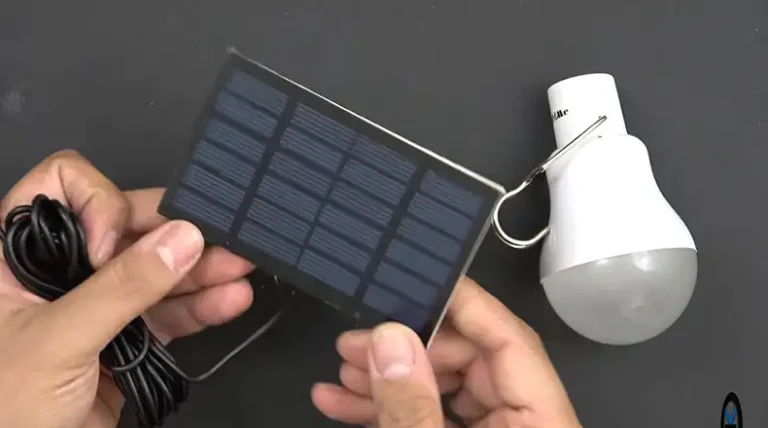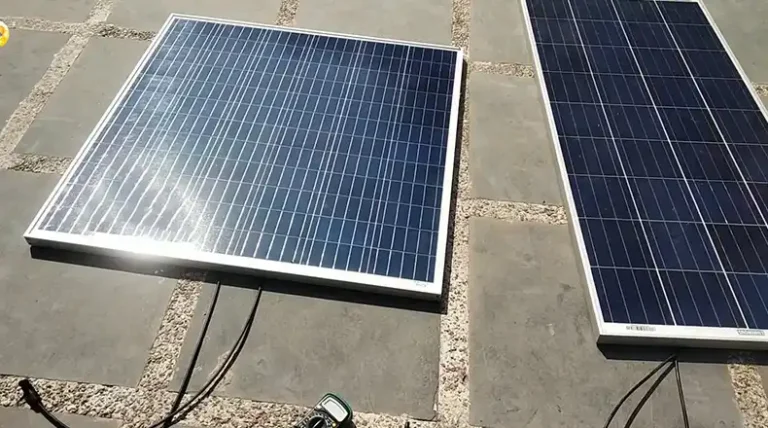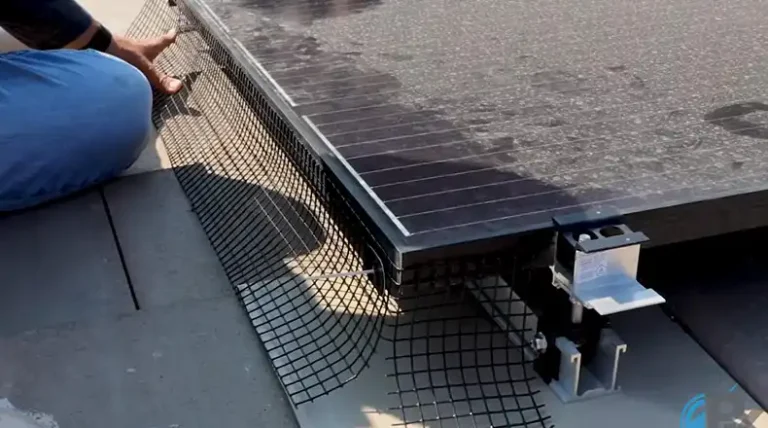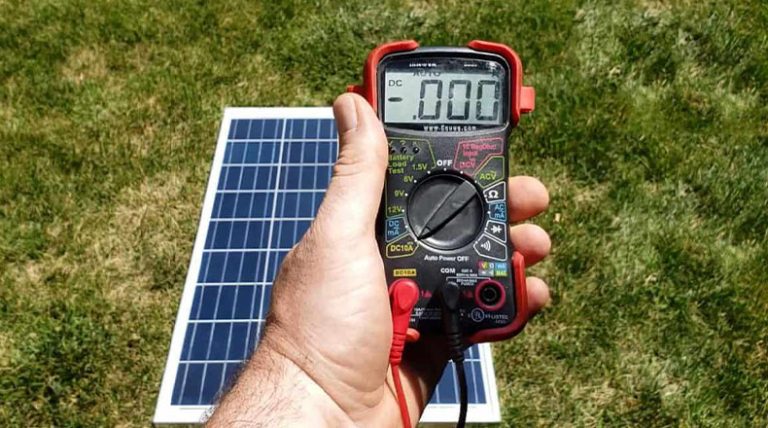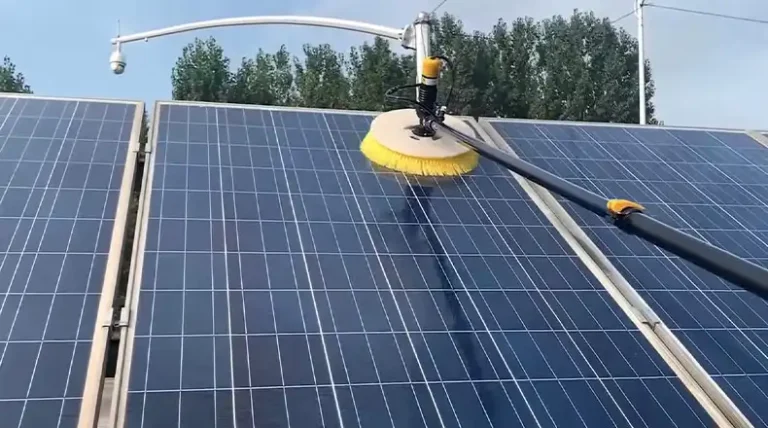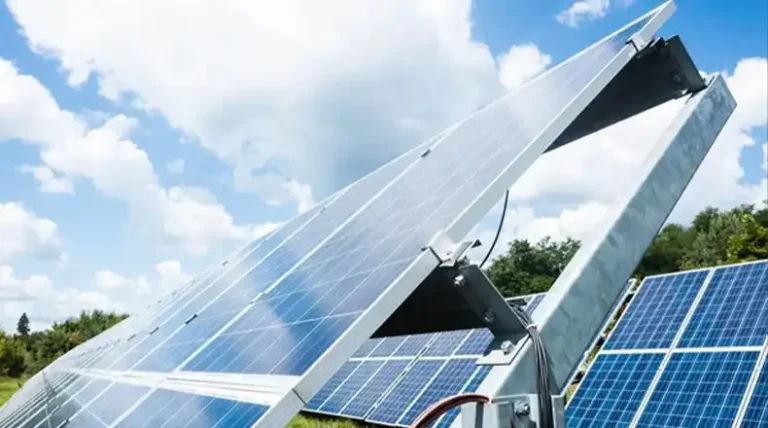Shingled Solar Panels vs Monocrystalline | What Apart Them
With so many solar panel options now available, it can be tricky to know which type is best for your needs. Two of the most popular solar panel technologies are shingled solar panels and monocrystalline solar panels. But what exactly is the difference between these two options?
In short, shingled solar panels are made of many small, overlapping solar cells and tend to be more efficient but also more expensive than traditional monocrystalline panels. Monocrystalline panels, on the other hand, are made of larger solar cells cut from a single crystal of silicon, making them cheaper but slightly less efficient.
To help you make the right decision for your home, I already have compared shingled vs monocrystalline solar panels across a range of factors including efficiency, costs, warranties, aesthetics, and more in this article. So without any further ado, let’s get started below!
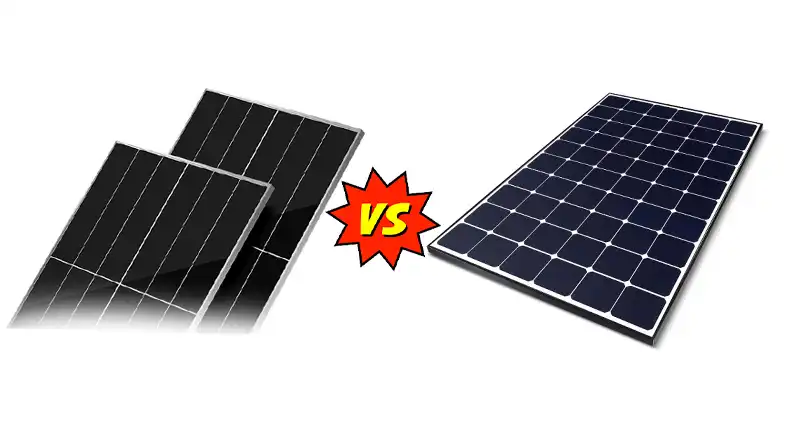
What Are Shingled Solar Panels?
Before directly comparing shingled and monocrystalline solar panels, it helps to first understand what exactly shingled panels are and their key features.
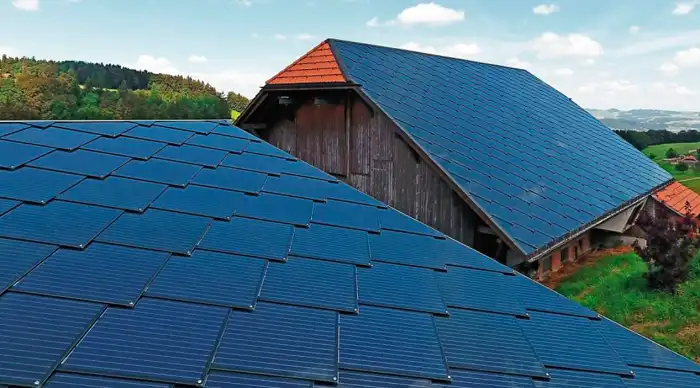
Shingled solar panels, also known as multi-crystalline silicon or multi-Si panels, are made up of many small solar cells that overlap slightly, like shingles on a roof. The overlapping cells are electrically connected by thin strips of conductive material.
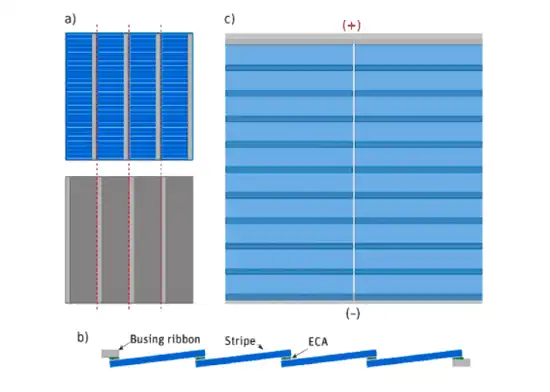
These panels are produced by cutting square wafers of silicon into many smaller strips which are then soldered together. This manufacturing process allows more solar cells to be packed onto each panel, increasing efficiency.
The key features of shingled solar panels include:
- Constructed from multi-crystalline silicon wafers
- Cells are cut into strips and overlapped like shingles
- Higher efficiency than monocrystalline (typically 18-22%)
- Aesthetically attractive sleek all-black design
- Higher cost per watt than monocrystalline panels
Now that we’ve covered the basics of shingled solar panel construction and features, let’s overview monocrystalline technology before comparing the two options.
What Are Monocrystalline Solar Panels?
Monocrystalline solar panels have traditionally been the most common solar panel technology installed in homes. Here are the key things to know about how monocrystalline panels work and their capabilities:
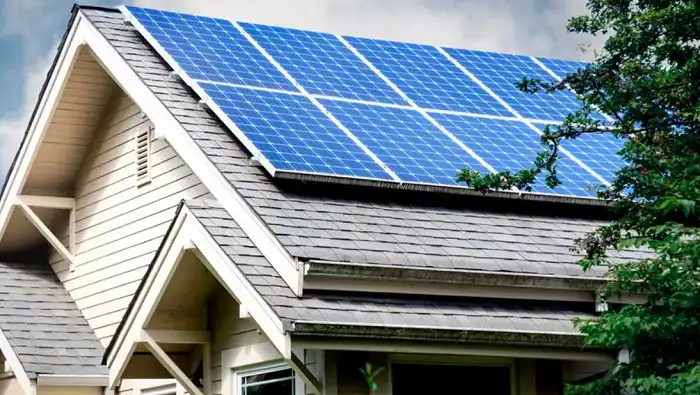
Monocrystalline solar panels are made from silicon ingots which are sliced into wafers and then cut into square solar cells. The cells are wired together and laminated between sheets of glass and plastic to produce each panel.
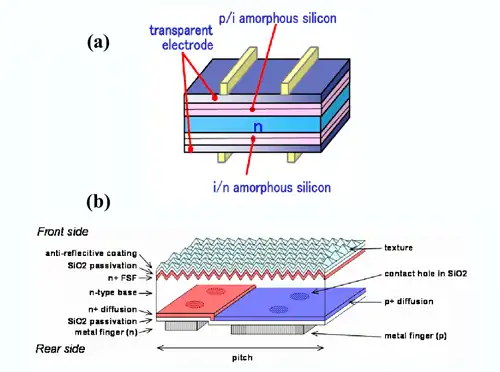
The features of monocrystalline solar panels are:
- Constructed from single-crystal silicon cells
- Square solar cells wired together
- Slightly lower efficiency than shingled (typically 15-18%)
- Distinctive rectangular blue cell design
- Cheaper per watt than shingled panels
Now that we’ve covered the basics of both solar panel types, let’s dig into directly comparing shingled vs monocrystalline across several key factors:
Shingled vs Monocrystalline Solar Panels
Efficiency Comparison
One of the most important considerations when choosing which solar panel is right for your home is efficiency. More efficient solar panels will produce more kilowatt-hours (kWh) of electricity under the same conditions.
Shingled solar panels are generally more efficient than monocrystalline options:
- Shingled solar efficiency range: 18-22%
- Monocrystalline solar efficiency range: 15-18%
So why are shingled panels able to reach higher efficiency levels? There are two key reasons:
- Reduced electrical resistance and shadowing losses from the overlapping shingle-like cell structure.
- Multi-crystalline silicon used in shingled panels absorbs sunlight better than the single-crystal silicon in monocrystalline panels.
However, monocrystalline technology has been catching up in recent years. The most high-tech monocrystalline panels called n-type mono PERC can now match or exceed the efficiency of shingled panels. But these newer monocrystalline panels also come with a higher cost.
Overall, shingled solar panels currently retain a small efficiency advantage over the majority of monocrystalline options, allowing them to squeeze out some extra solar production.
Cost Comparison
In addition to efficiency, the other major factor to consider is the cost difference between shingled and monocrystalline solar panels.
When it comes to price per watt, monocrystalline solar panels are generally cheaper than shingled:
- Shingled solar cost: $0.80-$1.00 per watt
- Monocrystalline solar cost: $0.60-$0.80 per watt
The larger silicon cells and simpler manufacturing of monocrystalline panels translate into lower production costs. So if your priority is maximizing your solar system size within a certain budget, monocrystalline panels may allow you to get more total watts for your dollar.
However, the modest efficiency advantage of shingled panels means you can offset a smaller roof area with fewer total panels, partially offsetting the higher per-watt costs. The greater durability and longer warranties of shingled panels (see next section) can also justify the extra investment.
Warranty Comparison
When investing in a solar panel system for your home, you want panels that will stand the test of time. So the product and performance warranties offered by different solar panel manufacturers are important to consider.
Shingled solar panel warranties are typically longer and better than monocrystalline:
- Product warranty: 15-25 years
- Performance warranty: 25-30 years
Monocrystalline solar panel warranties tend to be more limited:
- Product warranty: 10-15 years
- Performance warranty: 25 years
The longer shingled solar panel warranties demonstrate the manufacturers’ added confidence in the durability of their technology and commitment to reliable long-term performance. This can provide you with extra peace of mind about your investment.
Aesthetics Comparison
Unless you are installing solar panels out of direct sight, aesthetics can be another consideration when weighing up shingled vs monocrystalline options.
Shingled solar panels have an attractive uniform black appearance thanks to the overlapping black silicon shingles:
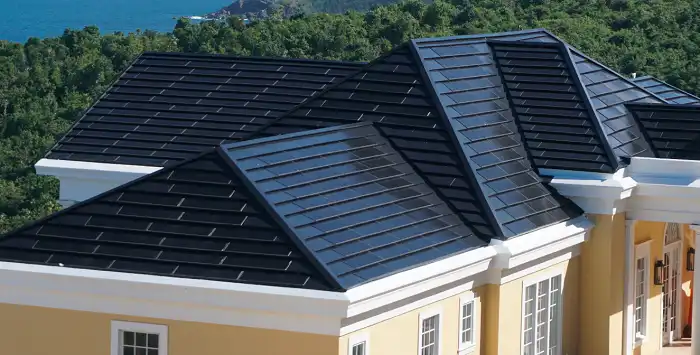
Monocrystalline solar panels have a more distinctive appearance with visible square blue solar cells:
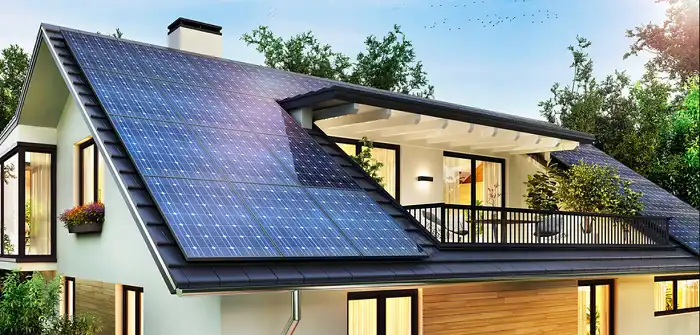
While aesthetics are subjective, some homeowners prefer the cleaner uniform look of shingled solar panels on their roofs. That said, monocrystalline panels have become less obtrusive looking over time as the cells have become smaller and darker.
Temperature Performance Comparison
Solar panel efficiency and output are negatively affected by high temperatures. When solar cells heat up, their voltage drops, reducing power production.
Shingled solar panels tend to have slightly better temperature performance characteristics and maintain their efficiency better in hot conditions. The silicon wafer material used provides good thermal conductivity.
Monocrystalline solar panels are slightly more prone to losses as temperatures rise, with performance dropping around 0.4% for every 1°C over 25°C. This isn’t a major issue in cooler climates but is something to factor in if you live in a hot location. Proper airflow under and around the panels can help offset these effects.
Durability Comparison
Given solar panels are a major investment and will be fixed on your home for decades, you want panels made to withstand the elements. Durability is another area where shingled solar panels excel.
The shingled panel structure shares stress and redundantly distributes electrical connections across the overlapping cells. This makes them more durable and tolerant of minor cell damage or breakages. They are also less affected by wind or snow loads.
Monocrystalline solar cells are more brittle and prone to cracking, with each individual cell responsible for producing its portion of current. Cracked cells can disproportionately degrade and reduce the output of the entire panel.
Overall, the durable shingled solar panel construction gives them an advantage in terms of robustness and longevity. Their superior resilience to physical damage helps justify the higher initial cost.
Other Factors to Compare
Here are the other factors to consider when choosing between shingled and monocrystalline panels:
| Factor | Shingled Solar Panels | Monocrystalline Solar Panels |
| Panel Weight | Heavier due to more silicon material | Lighter due to fewer/thinner cells |
| Framed vs Frameless | Usually framed | Frameless options available |
| Roof Loading | Higher due to extra weight | Lower due to lighter panels |
| Fire Safety | Excellent, built with fire-resistant materials | Good, meets fire standards |
| UV Resistance | Very good, UV-stable materials | Good, meets UV requirements |
| Certifications | UL, IEC, etc. | UL, IEC, etc. |
| Recyclability | Fully recyclable | Fully recyclable |
| Roof Integration | Low-profile integrated options | Low-profile options available |
| Microinverters | Compatible with module-level inverters | Compatible with module-level inverters |
Pros and Cons Comparison
To summarize the key differences between the two technologies, here is an overview of the main pros and cons of shingled vs monocrystalline solar panels:
Shingled Solar Panel Pros
- Higher efficiency – Shingled panels typically rate from 18-22% efficiency compared to 15-18% for most monocrystalline panels. This allows them to produce more power per square foot of roof space.
- Superior durability – The shingled cell structure and redundant electrical connections make these panels highly resilient to physical damage as well as wind and snow loads. They continue working well even if individual cells are cracked or shaded.
- Excellent weather resistance – Shingled panels stand up well to all weather conditions including rain, hail, and UV light thanks to protective glass and water-shedding panel coatings. Multi-crystalline silicon also has good temperature tolerance.
- Long 25-30-year warranties – Strong product and performance warranties covering shingled solar panels demonstrate manufacturer confidence in their reliability over decades of operation.
- Sleek black aesthetic – For homeowners concerned about aesthetics, shingled panels have an attractive uniform black appearance that blends nicely with modern rooftops.
Shingled Solar Panel Cons
- Higher upfront cost – The advanced manufacturing and extra silicon required for shingled solar panels come at a premium cost per watt, typically $0.80-$1.00. This can constrain system sizes for budget buyers.
- Limited color options – Shingled panels only come in black. While attractive, this rules out blending them into roofs using non-black solar shingles or tiles.
Monocrystalline Solar Panel Pros
- Lower cost – Thanks to economies of scale and simplified manufacturing, monocrystalline panels cost $0.60-$0.80 per watt – roughly 20% less than shingled panels. This allows larger systems for the money.
- Good efficiencies – While not matching shingled panels, monocrystalline efficiencies of 15-18% are still respectable and constantly improving as technology advances.
- Mature technology – Monocrystalline solar panels have over a decade of proven field experience. Their electrical properties and behavior over decades of operation are well-characterized.
- Aesthetic options – Monocrystalline panels come in different frame colors and some offer black cells or selective transparency for better rooftop blending.
Monocrystalline Solar Panel Cons
- Less durable – Monocrystalline cells are brittle and prone to cracking as they age, leading to faster degradation. They are also vulnerable to shading and hot spots.
- Shorter warranties – Typical 10-15 year product warranties on monocrystalline panels are shorter than those offered for shingled panels, indicating less long-term reliability.
- Hot weather losses – Monocrystalline panels experience substantial losses in performance as temperatures rise above 25°C. In hot climates this can meaningfully reduce energy output.
Which is Better Overall?
Based on this comparison, shingled solar panels tend to edge out monocrystalline in performance across most categories. But monocrystalline remains a strong option for cost-conscious homeowners looking to maximize their system size.
For most residential solar buyers, shingled solar panels are often the best choice if you can fit the premium within your budget. The superior efficiency, durability, warranties, and aesthetics make them a savvy long-term investment.
However, the latest high-tech monocrystalline panels are catching up, so be sure to get quotes with detailed specifications before deciding. Ultimately your location, roof space, and budget will help determine which type is right for your property.
More Questions to Ask
- Are Shingled Solar Panels Worth The Extra Cost Over Monocrystalline?
In most cases, yes – the higher efficiency, durability, and performance warranties of shingled solar panels justify the extra investment over monocrystalline for a long-lasting system. However, monocrystalline remains a solid cheaper option if budget-constrained.
- How Much More Do Shingled Solar Panels Produce Vs Monocrystalline?
Shingled solar panels are around 5-10% more efficient than the average monocrystalline panel, producing about that much more energy under the same conditions. The exact performance depends on the models compared.
- Are Shingled Solar Panels The Same As Sunpower Panels?
Yes – SunPower manufactures premium X-Series and A-Series shingled solar panels and is one of the leaders in this technology. Their shingled panels set the bar for efficiency and reliability.
- What Are The Best Shingled Solar Panels To Buy?
Some of the best shingled solar panels come from SunPower, LG, Panasonic, and Solaria. Compare specifications like efficiency ratings, temperature coefficients, degradation rates, and warranties when choosing models.
- Are Monocrystalline Solar Panels Going Out Of Date?
No, monocrystalline remains a highly popular solar choice and the technology continues advancing. But higher-efficiency shingled and n-type monocrystalline panels are becoming more attractive options where higher performance is needed.
Wrapping Up
Weighing up shingled vs monocrystalline solar panels for your home is an important decision to generate clean energy while maximizing your investment. While monocrystalline panels are often cheaper, shingled technology offers compelling advantages in efficiency, durability, and performance warranties that justify the higher cost for many homeowners. Use this guide to make sense of the key comparisons and trade-offs to choose the best solar option for your roof and budget.

